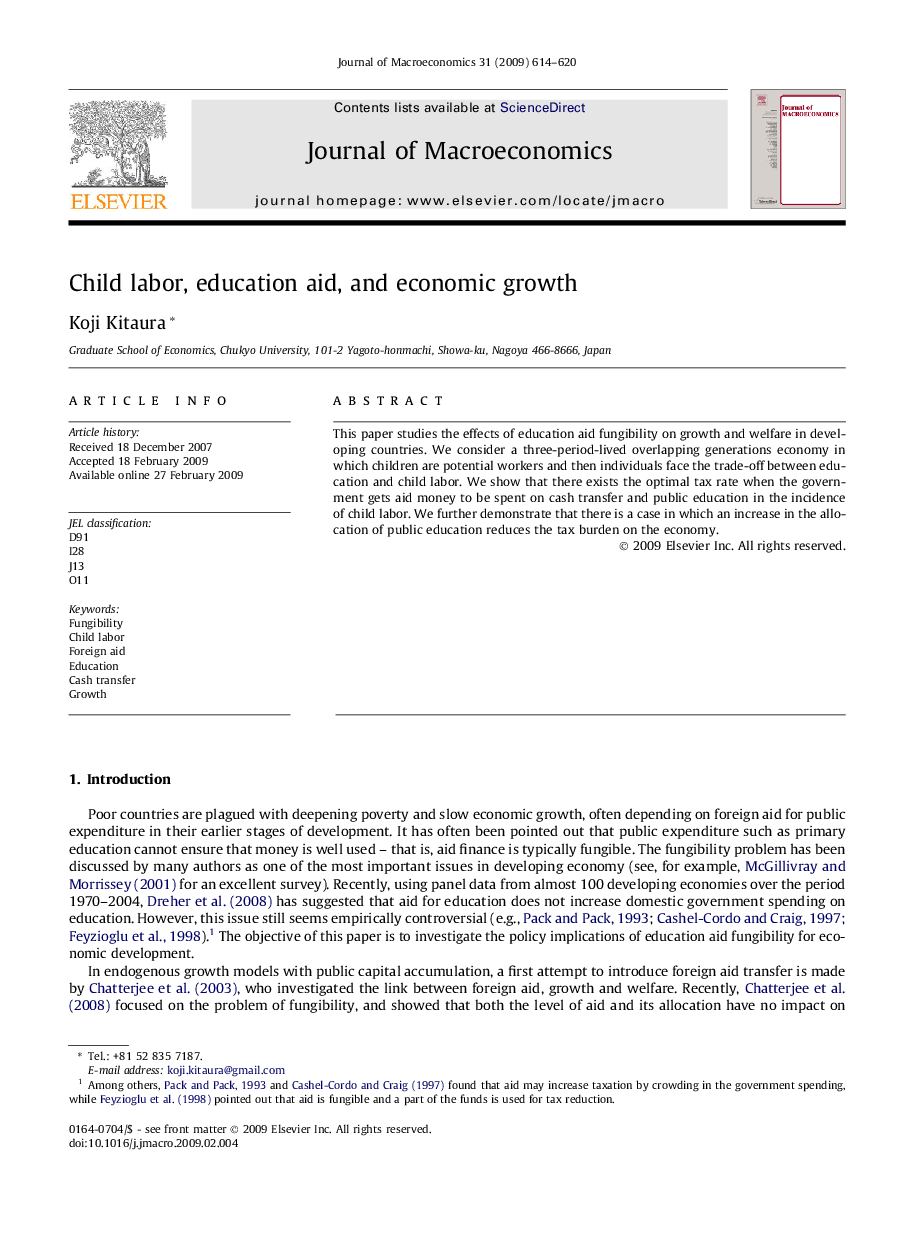| Article ID | Journal | Published Year | Pages | File Type |
|---|---|---|---|---|
| 965967 | Journal of Macroeconomics | 2009 | 7 Pages |
Abstract
This paper studies the effects of education aid fungibility on growth and welfare in developing countries. We consider a three-period-lived overlapping generations economy in which children are potential workers and then individuals face the trade-off between education and child labor. We show that there exists the optimal tax rate when the government gets aid money to be spent on cash transfer and public education in the incidence of child labor. We further demonstrate that there is a case in which an increase in the allocation of public education reduces the tax burden on the economy.
Related Topics
Social Sciences and Humanities
Economics, Econometrics and Finance
Economics and Econometrics
Authors
Koji Kitaura,
